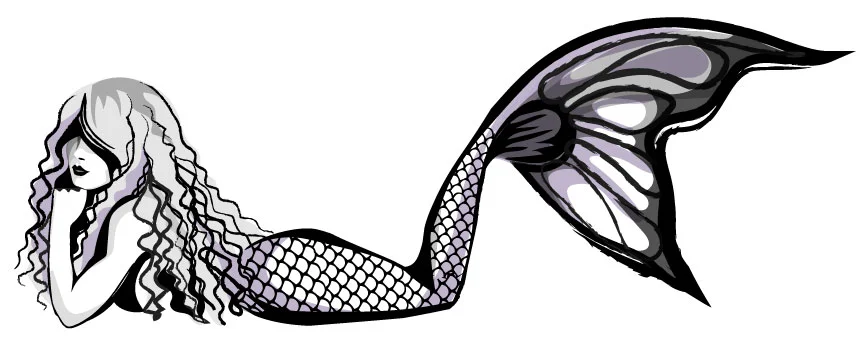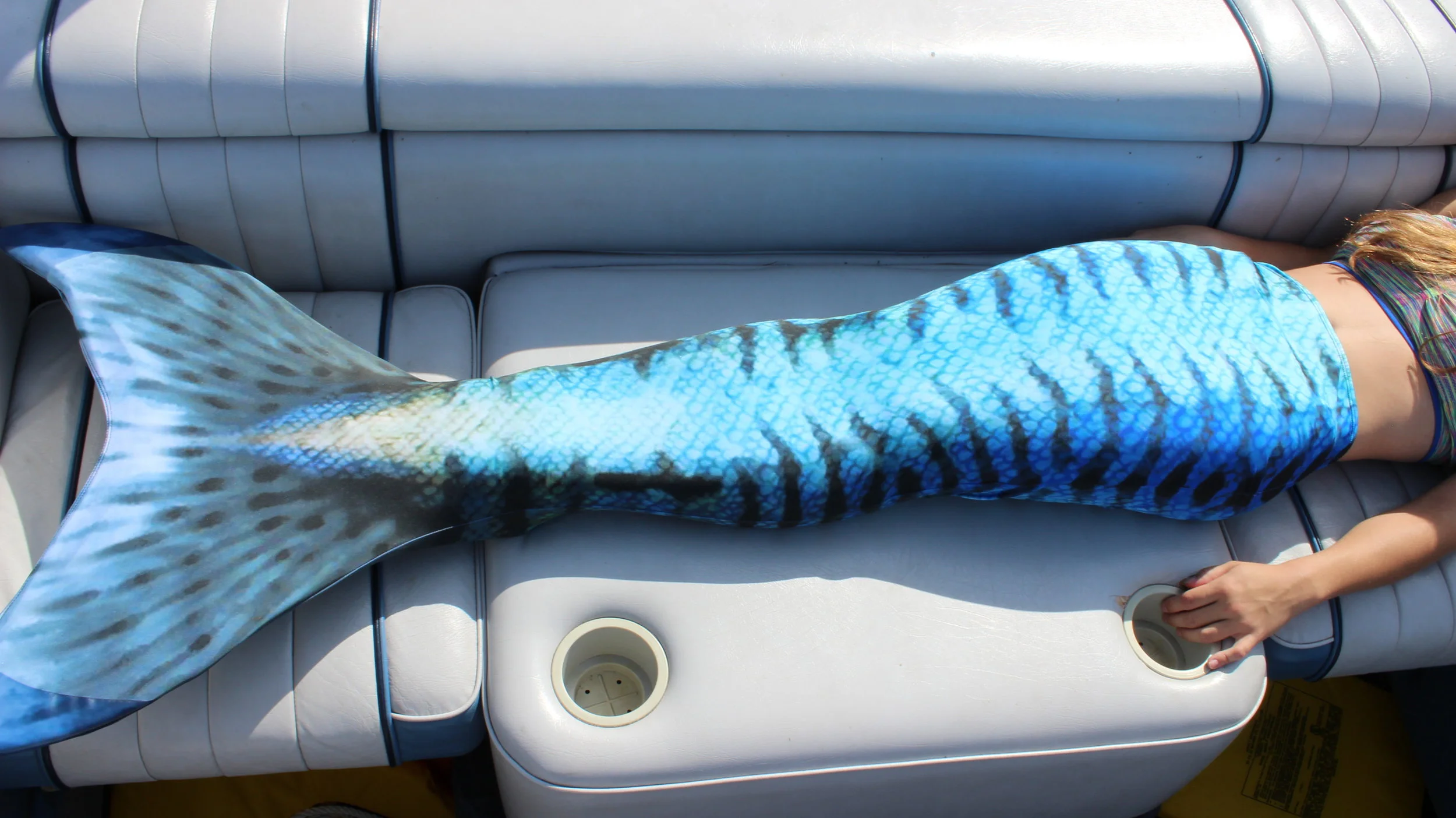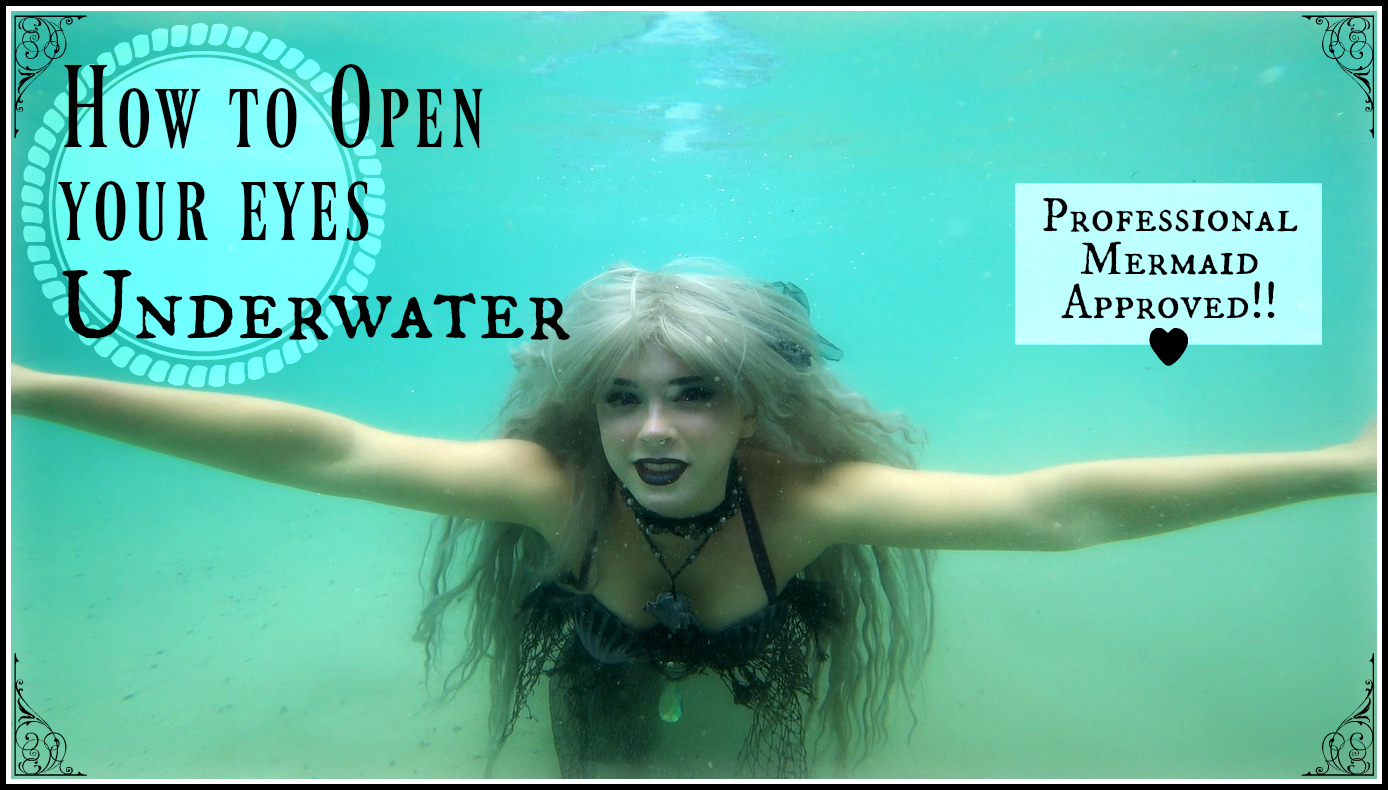Don’t Drown! Do this Instead!
I think we can all agree that NOBODY wants to be the mermaid in the news for drowning, getting ill, or getting seriously injured from swimming or using their tail. Not only would that be extremely embarrassing, but it would also decrease the likeliness of pools and public areas allowing the use of mermaid tails in the water. So let’s take a moment to go over some basic safety information that you NEED to be aware of when you are swimming in the water or using a mermaid tail. Please be aware that these safety tips are for EVERYONE. Professional Mermaid, casual mermaids, new mermaids, old mermaids, square mermaids, purple mermaids, hairy mers… safety is for EVERYONE. So let’s get started.
Know how to Use a Mermaid Tail
This may sound obvious, but hear me out! If you or your child plan on swimming in a mermaid tail, them make sure that you know how to use your tail. This not only means knowing how to properly swim in a tail or monofin using the Dolphin Kick Motion, but it also means knowing how to get out of your tail quickly and with ease. This is one of the reasons that it is SO important to only swim in a tail that matches your experience level. I HIGHLY recommend using Fin Fun Mermaid tails for your first tail or your child’s first tail. They are inexpensive, lightweight, come in many sizes and (beautiful) colors and they are very easy to get into and out of quickly.
Below is a Fin Fun Mermaid tail that my sister created using Fin Fun’s “Custom Tail Creator” option. Although this exact design is NOT for sale on their website, you can find many great tails on their website. I started with a Fin Fun Tail and definitely can vouch for them as a great starter tail.
If you need some extra help learning how to swim in your mermaid tail, then I highly suggest that you look up mermaid schools in your area. Most of these swimming classes are open to people of all ages and experience levels. If you’re not a kid anymore (we’re all kids at heart!!) and feel weird about attending a mermaid swimming class, then I recommend inviting a friend or family member to go along with you so that you can feel awkward together. :)
If you are in Traverse City, you should check out my friend https://www.TCMermaid.net She doesn’t know I’m recommending her, but I’ve worked with this gal in the past and she is a GREAT mermaid instructor.
Never Swim Alone OR Be Alone as a Mermaid
Mermaids and mermen travel in pods… and you should too! Whether you’re a newbie or a seasoned professional mermaid or even just a normal-human-person who is reading this… you should NEVER swim alone or BE alone in a mermaid tail. Why is this? Well, there’s the obvious answer, and then the not-so-obvious answer. FIRST. If you are swimming in the water (with or without a tail) you should always have someone with you. This is in case you start to drown, have any complications in the water (heart attack, seizure, panic attack, hypothermia, etc.) or get injured while swimming.
In addition to having someone with you while you swim, you should also have someone with you while you are wearing a mermaid tail. Why is that? Let’s just say that mermaid tails can attract attention. And SOMETIMES the attention you attract doesn’t always make you feel super safe. Personally, I’ve had men ask me to kiss them, I’ve had people say some inappropriate things to (and about) me, and I’ve had many an interaction with people who weren’t exactly sober. This is one of the reasons that I have my dad (or another strong and trusted person) come with me to events as a professional mermaid. He also helps move me around (since silicone tails cannot be taken on and off as easily as fabric tails), control situations if they get out of hand (ex: people let their dogs run loose on the beach and said dog comes charging at the immobile mermaid…LEASH YOUR DOGS IN PUBLIC PLACES), and creates diversions for me when I need to transform.
ALWAYS have someone with you wherever you go as a mermaid or merman. And if you can’t, at LEAST let someone know where you are going and when to expect you home. Remember, safety first!
Be aware of Swimming Hazards and your Swimming Environment
Make sure you know what Mother Nature is up to before you go swimming. This safety tip applies mostly to mermaids and swimmers that swim in natural bodies of water such as lakes, oceans, rivers and ponds. However, it can also apply to those who swim in outdoor pools as well. Before you go swimming, make sure you look up the weather forecast to ensure that there are no thunderstorms coming your way. Also check to see if there are any marine warnings, elevated E. Coli levels, toxic bacteria blooms, etc. in your area. Here is a nice, neat and probably not 100% complete list of things to consider before diving in:
Water Temperature
Ripe Tides and Strong Currents
Weather Conditions (thunderstorms, hurricanes, tornadoes, strong winds, etc.)
Toxic Conditions (elevated E. Coli levels, improper balance of pool chemicals, cyanobacteria blooms, swimmer’s itch, oil spills, etc.)
Know of the Dangerous Animals in your Area and how to Avoid Confrontation with them and WHAT to do if you encounter them (LAND ANIMALS: Cougars, bears, poisonous snakes, wild boar, poisonous spiders, etc. AQUATIC ANIMALS: Alligators, crocodiles, sharks, leeches, parasites, jellyfish, etc. )
If you swim in an outdoor pool, it is best to have a strong barrier around it if you run the risk of waking up to a croc or alligator lounging in your pool! If you swim in natural bodies of water, make sure you research your location to know who you are sharing your swimming hole with and how to deal with/ avoid said creatures. And again, pay attention to all of the other things listed above too!
Take Care of yourself Before, During and After a Swim
I am a professional mermaid. Most of my friends are also professional mermaids or performers of some sort. And as a performer, it can be VERY easy to forget about taking care of yourself while doing what it is that you love doing. I’m sure you already know this, but make sure you are taking care of yourself and/or your child before, during and after each swim.
Before swimming, this means eating nutritious food, getting enough water and getting plenty of sleeping. You may also want to stretch or warm up before your swim too. During your swim, ensure that you are taking breaks as needed to rest, refuel and relieve yourself (not in the water please!!). If you aren’t a performer, I suggest that you wear goggles whenever possible in the water to help keep your eyes healthy. You can also get things such as sinus savers and ear plugs too. If you DON’T use any of those things, make sure that after you swim you spend time babying your eyes, getting water out of your ears and cleaning your body well. After all… you clean your mermaid tail, right? Then clean yourself too!!
You can click HERE to learn more about eye care for mermaids.
Know your Limits as a Swimmer and a Mermaid
This is something a lot of my viewers told me that they sometimes overlook. And I’ll admit, sometimes I’m bad at following my own advice too. But no matter who you are, how experienced you are as a mermaid (or swimmer) or how ambitious you are… you NEED to know your limits. Are you too cold? Get out of the water. Are you too tired? Get out of the water! Not feeling ready to safely swim in open water? GET. OUT. OF. THE. WATER. I am all for pushing yourself to be your best and I am all about doing my best to perform for my clients… but even I have my limits. And to be safe, I know to be aware of them and stay within my “safe zones.”
For example... When I am swimming in a tank and I need to come up for air, I don’t push myself to stay under for another minute… I’m not at that level yet! Instead, I come up for air. If I want to extend my breath hold, then I need to seek expert advice and slowly work towards increasing my breath hold. Likewise, there are people who want to work as mermaids in tanks or who want to swim in silicone tails. GREAT! Work towards those points. If you are a new or an inexperienced mermaid though, you have no business jumping into a tank or buying a silicone tail right off the bat. Both of those are things that you need to work towards slowly as you gain experience. Otherwise, you will get hurt (or worse, hurt someone else).
Be aware of what you can and cannot do. And with that, be smart about what it is that you are doing.
Have your own Safety Tips you’d like to Share?
Thank you so much for taking the time to read this blog post! I hope you found it helpful and I hope you’ll pass it along to others so that we can all stay safe and healthy as swimmers! If you have any safety tips for mermaids (and mermen) or for swimmers, please leave your comment below!
Thanks again for swimming by!
XOXO~ Mermaid Phantom of The Magic Crafter
PLEASE NOTE: THIS BLOG POST MAY CONTAIN AFFILIATE LINKS. THIS MEANS THAT I MAY EARN A COMMISSION OFF OF ANY PURCHASES YOU MAKE THROUGH USING THESE LINKS. THIS DOES NOT COST YOU ANYTHING EXTRA! IT IS SIMPLY ONE OF THE WAYS THAT I HELP FUND THE PRODUCTION OF MY VIDEOS FOR YOU! THEMAGICCRAFTER.COM IS AN AFFILIATE OF FIN FUN MERMAID. HOWEVER, I ONLY SHARE PRODUCTS THAT I USE, LIKE OR TRUST… AND YOU KNOW I USE, LOVE AND RAVE ABOUT FIN FUN MERMAID TAILS!






